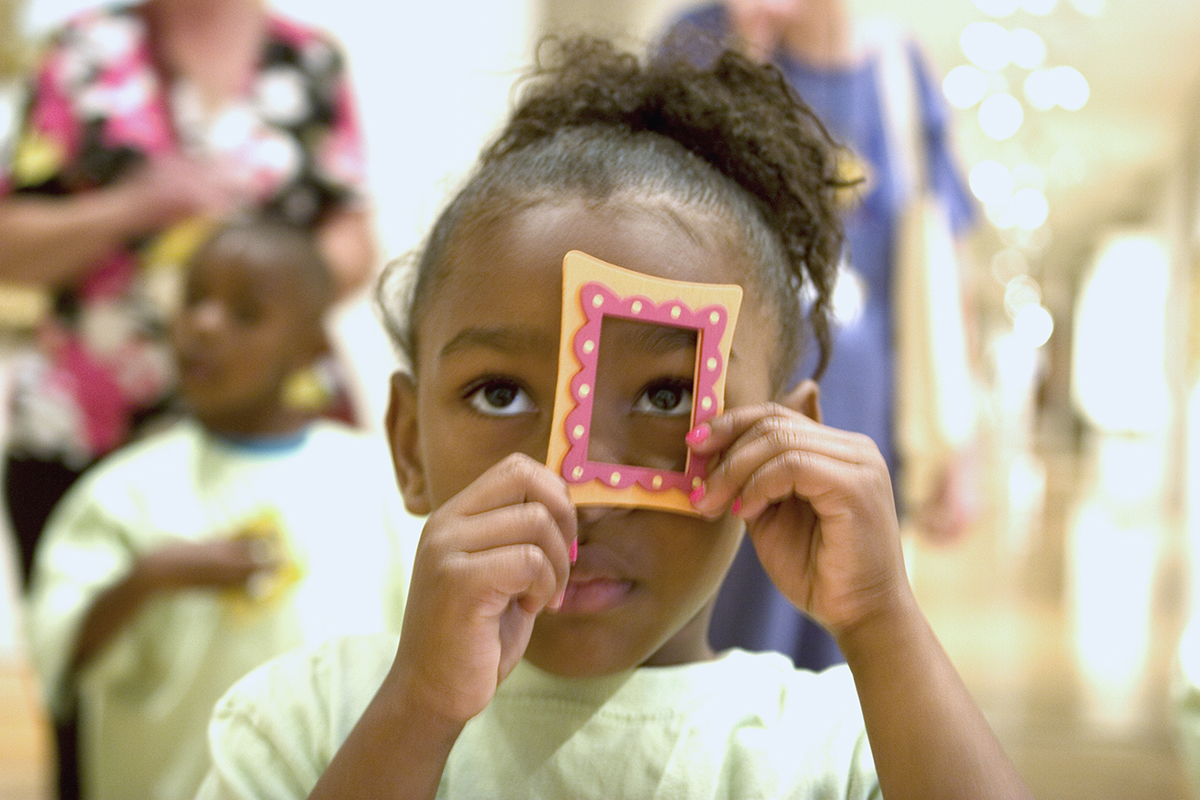Props
Props can be used to breathe life into a static artwork, perhaps through touching materials used to make it, hearing music associated with it, seeing the technique used to create it, or looking at it in a contextual photograph. Good props enhance understanding of the art and artist. Props may also better accommodate visitors of all ages who prefer hands-on experiences. Activating our senses reinforces learning on a tour.
Some docents and guides are comfortable using an iPad or tablet on their tour, with all supporting contextual information at their fingertips. While it is convenient to use an iPad or tablet, use it sparingly at tour stops to keep your group focused and engaged with the artwork rather than the technology.
Once you have your choice of artworks, check out prop possibilities in the Tour Office. If you have not used props before on a tour, try adding one for your next tour. For Art Adventure sets, we have folders with contextual photos and other materials supporting discussion on your route.
